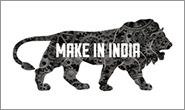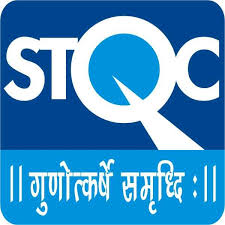1. It is a great pleasure to join you all today at this symposium on ‘Tradeand Investment Environment of India’. I welcome members of the China Top500 Foreign Trade Enterprises Club to the Indian Embassy for an event whichcomes at a particularly opportune moment.
2. India and China have a long history of economic collaboration, probably theoldest among nations in the world today. In the contemporary era,however, that relationship is more recent and much thinner. One of theconsequences of the border conflict was to bring our economic interactions to astandstill and it is only in the last 25 years that normalcy returned. Wehave sought to make up for lost time as part of the rebuilding of ourties. Trade volumes have grown steadily, as have different facets ofeconomic interaction. New mechanisms and agreements have emerged whichfacilitate that process. The MFN agreement of 1984, border tradeagreements of 1991 and 2003, avoidance of double taxation agreement of 1994,customs cooperation agreement of 2005 and the bilateral investment protectionagreement of 2006 together provide us the framework to do so.
3. Far from being complacent about the state of our economic cooperation, we aretoday confronted with serious concerns on this front. There are four bigissues that we need to debate. The first pertains to trade imbalance andchallenges of market access. The second relates to economiccomplementarities and how they could be exploited. The third centres oninvestment possibilities and perceived impediments. The fourth is toreconcile the characteristics of two very different systems so that we can findcommon ground.
4. Bilateral India-China trade has certainly grown very impressively in the lastdecade. In 1995, trade turnover was only $ 1.16 billion. Even aslate as 2003, it stood at $ 7.6 billion. Thereafter, it took off, peakingat $ 73.9 billion in 2011. We have hopes of crossing the $ 100 billionmark by 2015 although recent trends are not encouraging. A combination ofglobal slowdown and sectoral challenges has brought trade down to $ 66.6billion in 2012. Figures upto May 2013 point to a further 26% decrease inIndia’s exports, mainly in iron ore, copper and cotton. More than theuncertain turnover volume, there are two key issues that today drive ourdiscussions: (a) the large trade imbalance withthe prospect of India’s deficit aggravating even further, and (b) thecomposition of the two trade baskets, with India importing machinery andmanufactured goods from China while only exporting commodities in return.
5. These issues have a common root in the growing perception in India that ourtrade balance, instead of reflecting the competitiveness of our nationalindustries, is actually the outcome of restricted market access. Let meamplify. If we are to pick two sectors where India is regarded by therest of the world as competitive, this would undoubtedly be pharmaceuticals andIT services. In China, however, neither has made a significantimpact. In the case of pharmaceuticals, Chinese product approvaltimelines that used to be 3-4 years have now been further extended. Limitations on generic versions of innovator drugs make hospital listingharder. Bio- equivalence studies for oral drugs and clinical testing for injectables have to be repeated in China. Suchregulatory impediments make Indian pharmaceutical exports to China verydifficult.
6. Let us turn to IT services. Here, our companies can participate in systemintegration projects only if they have SI certificates and the requisitesecurity clearance, neither of which are readily forthcoming. IT-BPOcompanies are hobbled by withholding tax that impact negatively on an industryreliant on inter-company billing. There also seems a reluctance to useIndian IT services in third country markets. The situation is no lessdiscouraging for engineering goods, where India does have nichestrengths. Those who question if we are competitive in China should notehow local procurement conditions have affected, for example, the import ofgasifiers from India. Sectors like auto components face hurdles of closedprocurement loops. Our agro-product negotiations are perhaps symbolic ofthe state of commerce. After more than a decade of negotiations, only 3out of 17 items on the table have cleared the phyto-sanitary barrier. Thecontrast with the situation in India, where Chinese products enjoy relativelyunrestricted access, cannot be sharper. Clearly, we need to find someremedies to this imbalance quickly. Promises to import more from Indiaare wearing thin in the absence of action.
7. We recognize that trade is driven by self-interest and China would expand itsimport basket only if it is advantageous to do so. In our view, there aresignificant complementarities between the two economies that bear betterexploitation in mutual interest. Pharmaceuticals itself is the notableexample as China’s medicine costs are significantly higher than India and arebecoming a serious budgetary strain as its health coverage expands. ITservices from India are similarly a value waiting to be realized in a countryaggressively promoting urban services and whose companies are now going out inthe world without their own IT support.
8. On its part, India too has demands that can be more efficiently met through theinvolvement of Chinese companies. The most obvious area is in theimprovement of infrastructure. Chinese companies already have significantmarket shares in power generation and telecommunications. In fact, India isChina’s largest overseas market for project exports. There isconsiderable scope for further business in highway construction, powertransmission and railway modernization. As a growing supplier of heavymachinery, there are also opportunities for those companies that are able toaccurately assess Indian demand. Though there are branding issues,Chinese automobiles and consumer goods clearly have a future in a pricesensitive market. But there are also challenges that Chinese industryconfront in India, including the impact that variable quality may have on theirreputation. Equally important is the maintenance and upkeep of equipmentalready supplied to India. Chinese companies need to do more, includingsetting up service centres in India, if they expect second generationorders.
9. One way forward is through a strategy of cross investments that could buildlinkages and address other shortcomings of our current situation. China,I believe, is the sixth largest exporter of capital today. From initialfocus on resources and technology, its overseas direct investment has now begunto look more at creating global market shares. The size of the market andits current stage of development makes India a natural destination. A Chinesepresence that creates employment, improves technology levels and expandscapacity fits into our National Manufacturing Policy. Over a period oftime, as China’s own experience with incoming FDI has demonstrated, it willlead to backward linkages. Part of the solution to our trade predicament maywell lie in the domain of investments. The overall FDI climate in Indiais getting more welcoming and China should take more advantage of thissituation.
10. Investing in an economy so different from China’s has its own challenges. But there are a number of pioneering Chinese enterprises who are an example toothers. Among them are Lenovo in personal computers, Sany in constructionmachinery, TBEA and BTW in transformers, Liugong in earth moving equipment,Haier in white goods, Xindia Steel in pipes, Huawei and ZTE intelecommunications and Yapp Motors in fuel tanks. A number of largeChinese enterprises are currently poised to make decisions on India. Thefilm you just saw about the experiences of Chinese investors in India should beboth instructive and encouraging.
11. While there are these examples of successful Chinese investments in India,there are still significant gaps on both information and understanding aboutIndia. Even the impressive project export situation has had a limitedimpact on the knowledge deficit because it was driven by the demand side ratherthan the supply one. Chinese companies, therefore, need to have a properappreciation of the extent of support and facilities that industry in generaland FDI in particular get in India. They must not confuse it for theirdomestic experience. Entry conditions in India will be different becausethe Indian economy is very different. It is also important to beconversant with local conditions and practices, including on the labourfront. Companies engaged in project exports are already aware that thereare justifiable limits on sending large scale personnel from China. Anability to collaborate with local companies is vital to success. Anaccurate understanding of legal rights and responsibilities is alsoessential. For that reason, today’s event includes a briefing by a legalfirm. Encouraging Chinese investments in India is work in progress and welook forward to feedback from those with actual experience. A currentshortcoming is the absence of significant Chinese banking presence inIndia. That situation should also improve in the coming years.
12. The recent visit to India by Premier Li Keqiang has brought out clearly thatboth India and China are committed to expanding their economic cooperation,particularly in trade and investment. Measures to address the tradeimbalance were discussed and much depends on the seriousness of the followup. Investment by Chinese enterprises in India, including participationin infrastructure development, was welcomed by the Indian side. Projectcontracting cooperation is also to be enhanced. We are currentlydiscussing establishment of industrial zones to provide a platform forcluster-type development of enterprises. Today’s event is one step torealize our common agenda.
13. Let me conclude by thanking the Club for initiating this dialogue. Wehope that this is the first of a series and there will be more opportunities toengage further on improving trade and investment. We expect that delegationsfrom Indian state governments would be visiting China this year with that verypurpose. This could provide us with occasions for more focuseddiscussions. Thank you for your attention.





























